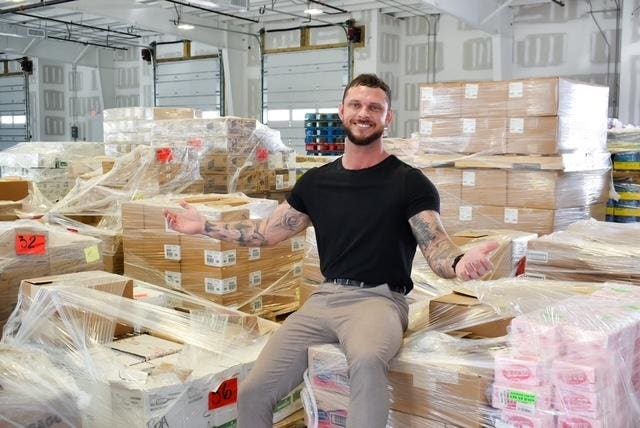Ron Earley, Greywolfe Investing CEO
Greywolfe InvestingAmazon has grown from a direct retailer to a thriving marketplace with third-party sellers now bringing in 61% of its total sales. This creates opportunities for founders like Ron Earley, CEO of Greywolfe Investing, a wholesale automation company specializing in Fulfillment by Amazon (FBA) services. Thanks in part to the FBA business model Amazon’s marketplace has seen incredible growth, with independent sellers hitting new revenue milestones garnering the attention of the next era of digital entrepreneurs and investors alike.
The Breakdown You Need To Know:
The platform keeps gaining momentum as third-party seller services generated $156.1 billion in 2024, according to Marketplace Pulse. Specifically, these services now make up 24.48% of Amazon’s total revenue. Small and medium-sized businesses dominate the scene and Greywolfe is helping them gain a large share of this market.
Amazon’s U.S. marketplace grew as third-party sellers made $36.2 billion in sales during Q2 2024. Sales went up by 12% compared to last year. Showing significant growth over the past several years, Marketplace Pulse reported the platform had 60,000 sellers exceeding $1 million in sales during 2021. This is a big deal as it means that million-dollar sellers doubled over three years.
Greywolfe Investing has been bringing more e-commerce entrepreneurs into the fold and currently works with 300 small Amazon FBA businesses. The company stands out with its unique approach and strategic focus on blending data-driven insights and AI integration with operational excellence.
“Our clients can tap into Amazon’s massive customer base, gain access to global markets, and scale quickly, all while focusing on product and brand growth. With predictable revenue and automated operations, FBA businesses are also attractive to investors and buyers, making them a great option for long-term success,” said Earley to CultureBanx.
Product Portfolio Optimization
Amazon’s marketplace expansion propelled seller success, especially across the U.S. as these sellers averaged over $250,000 in annual sales during 2023, according to the company’s website. They sold more than 4.5 billion items, that’s 8,600 items every minute. The highest earning sellers pick their products carefully and diversify their portfolio. A wider range of products helps sellers to:
- Avoid depending on single products
- Connect with different customer groups
- Build a stronger brand
- Create new revenue streams
Not to mention that the numbers make a strong case for Amazon FBA’s investment potential. Recent data shows 57% of Amazon sellers achieve profit margins exceeding 10%, and many earn much higher returns. Empire Flippers noted that most Amazon FBA businesses thrived as 71% either grew or managed to keep their net profits steady.
It’s not just the name brand products making a splash on the marketplace. Greg Mercer, Jungle Scout’s founder and CEO, explains, “Private label businesses are successful on Amazon because you don’t need to compete for the Buy Box, have unlimited inventory sources, and build valuable brand equity.”
FBA = Major ROI
Successful FBA ventures typically follow the “3 times rule.” They sell products at triple their purchase price to generate a 100% return on investment. This strategy works well because 22% of sellers report profitability within three months, and 58% achieve profitable status within their first year, Jungle Scout reported.
For investors with Greywolfe the company stated that once a storefront is established and has good traction, you’re looking at 18-22% every 30-45 days. Smart inventory management and proper cost analysis help sellers optimize their return on investment by keeping high inventory performance metrics and lower storage costs.
The Amazon FBA investment map has changed with the digital economy, leading 82% of sellers to now choose FBA, according to AMZ Prep. This shows how e-commerce has transformed, especially after recent global market changes.
Earley stated that “Greywolfe Investing helps clients capitalize on this by identifying high-potential FBA opportunities, optimizing operations, and using data-driven strategies to maximize growth. This approach enables our clients to capture a significant share of the booming e-commerce market.”
What’s Next
It’s important to note that FBA fees take up 30-40% of the product price, which covers fulfillment and referral charges. However, results prove how Amazon FBA offers a clear path to business success because 58% of businesses become profitable within their first year, and 22% report profits in just three months, Aura reported entrepreneurs and investors who accept new ideas, manage inventory strategically, and focus on intuitive approaches can set themselves up for long-term growth in this ever-changing e-commerce landscape.
Read the full article here


